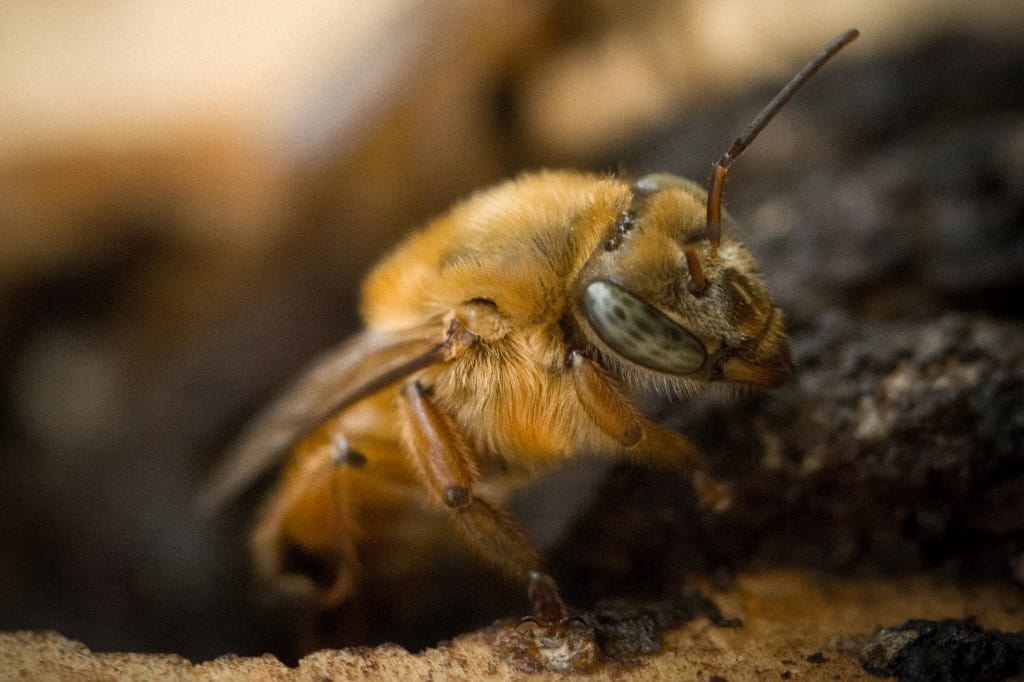Sure, I have a machete. So I’m not venturing into the wild without any form of protection. Afterall, when I’m out checking camera traps, I’m often alone in a forest full of potentially dangerous creatures. Perhaps a puma will pick up my scent and start to imagine what a biologist tastes like.
And jaguars are bigger yet, with a bite force of 1,500 pounds per square inch! I don’t know what that means exactly, but I know I don’t want it clamped down on my neck. Now start to imagine the dangers that are covered in scales. Of Costa Rica’s 141 species of snakes, a mess of them are venomous, laying in wait, completely willing to defend themselves if I step a little too close.
You wouldn’t be crazy to take all of these creatures into consideration before venturing into Costa Rica’s wildest places, but you would be missing a key threat. My number one jungle tormentor is a beast you’ve personally have had to deal with from time to time. Well, beasts. More specifically, swarms of beasts. Bees and wasps.
As I step out of my truck, don my backpack, and take my first steps towards the forest, the first thing that flashes through my mind is ‘Don’t get stung.’ To be fair, ‘Don’t get eaten by giant cat’ and ‘Don’t step on a snake’ also make quick appearances, but those feel like less immediate issues.
A much more frequent issue is getting stung directly in the face. I don’t know why it’s almost always in the face. I’ve heard it’s because they direct their attack toward the carbon dioxide in your breath, but I don’t know if that’s true. What is true is that Costa Rica is covered in bees and wasps, and they are perfectly willing to sting right in the face.
Usually it’s my fault. I’ll bump into a bush or grab a sapling to steady myself on a steep hill and seconds later I’ll be running, slapping myself and yelling words that make even the bees blush. Any rotten log, hole in the ground, tangle of vines or underside of a palm frond is a potential home to a handful of insects that have a very severe method of dealing with uninvited guests.
Normally, while painful, a sting or two has little effect on my day. I get stung. I swear. I realize I still haven’t put any sting cream in my backpack. I continue to look for camera traps. But sometimes these little insects have an outsized impact on my day.
Once, I was leading a tour of French-Canadian students around the enclosures of a wildlife rehabilitation and release center. At some point I bumped into the wrong tree and a big yellow and beigey-brown striped wasp told me to get lost with a well-placed sting directly between my eyes.
Within about 20 minutes the elephant man-like swelling that was occurring made it clear that I needed to say ‘au revoir’ to the students and catch a ride to the closest clinic. After two bags of some kind of medication in an IV, my wife showed up at the clinic to check on me.
My face was so swollen she later confided in me (jokingly?) that after having seen me like that she loved me a little less (and by then the swelling had gone down a little!).
Another time I was under a papaturro tree busily screwing a camera trap support into the base of the tree when I became aware of a buzzing noise at the exact moment that I started getting stung all over by honeybees.
I dropped everything and ran full force out from under the tree, swinging my hat above my head. The bees followed (and stung) for a good 50 yards. After a half hour or so, I tried to sneak around from a different angle to get my camera and backpack out from under the tree but, unfortunately, I just recreated the running/getting stung/hat thing again.
I ended up finding a beekeeper that happened to be working on the property, borrowing his get-up and retrieving my stuff protected like a knight in armor.
So, if you too find the need to explore Costa Rica’s wild places beware the dangerous creatures that call that realm their home because some of them will defend it. Vigorously. By stinging you right in the face.
About the Author
Vincent Losasso, founder of Guanacaste Wildlife Monitoring, is a biologist who works with camera traps throughout Costa Rica. Learn more about his projects on facebook or instagram. You can also email him at: vincent@guanacastewildlifemonitoring.com






